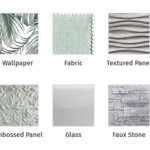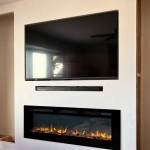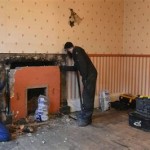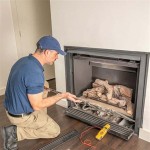Electric Fireplace Insert Only: A Comprehensive Guide
Electric fireplace inserts offer a convenient and efficient way to add the ambiance of a traditional fireplace to an existing fireplace opening or custom-built enclosure. Unlike wood-burning or gas alternatives, electric inserts eliminate the need for venting, gas lines, or wood storage, making them a versatile option for homes, apartments, and even offices. The "insert only" designation signifies that the product includes the essential heating and visual components intended for placement inside a pre-existing framework, without including the surrounding mantel or decorative surround. This allows for customization and integration into various design aesthetics.
The core function of an electric fireplace insert centers on providing supplemental heat and a realistic flame effect. The heat is typically generated through a fan-forced electric resistance heater, while the flame effect is created using LED lights and a rotating reflector or projection system. The intensity of both the heat and flame can be adjusted independently, allowing users to enjoy the visual appeal of a fire without the added warmth during warmer months. This functionality makes electric fireplace inserts a year-round amenity.
Selecting the appropriate electric fireplace insert requires careful consideration of several factors, including the size of the existing fireplace opening, the desired heating capacity, the preferred flame aesthetics, and the overall style of the room. Understanding the specifications and available features is crucial for making an informed purchasing decision.
Key Point 1: Understanding the Components and Functionality
An electric fireplace insert consists primarily of the heating element, the flame effect mechanism, the control panel, and the housing. The heating element is usually a resistance coil that heats up when electricity passes through it. A fan then blows air across the heated coil, distributing warm air into the room. The heating capacity is measured in British Thermal Units (BTUs) or watts, indicating the amount of heat the unit can produce. A higher BTU rating generally translates to a greater ability to heat a larger space.
The flame effect is typically achieved through a combination of LED lights, a rotating reflector, and a screen or projection surface. The LED lights illuminate the reflector, which creates the illusion of flickering flames. More advanced models may use holographic projection technology or simulated embers to enhance the realism of the flame effect. The brightness and intensity of the flames are usually adjustable, allowing users to customize the visual experience.
The control panel offers the user interface for adjusting the heat, flame, and other settings. Basic models may have simple on/off switches and dial controls, while more advanced units feature digital displays, remote controls, and programmable timers. Some models also offer adjustable thermostats to maintain a consistent room temperature.
The housing is the outer casing that encloses all the internal components. It is typically made of metal or a combination of metal and plastic. The housing is designed to be aesthetically pleasing and to protect the internal components from damage. The dimensions of the housing are critical for ensuring a proper fit within the existing fireplace opening.
Beyond the core components, secondary features can significantly enhance the usability and attractiveness of the electric fireplace insert. These might include built-in thermostats, remote controls for convenient operation, adjustable flame speed and brightness, simulated ember bed flicker, and even integrated sound effects mimicking the crackling of a real fire. The presence and quality of these features can contribute substantially to the overall user experience.
Key Point 2: Factors to Consider When Choosing an Electric Fireplace Insert
Selecting the right electric fireplace insert involves a careful assessment of various factors, including the size and dimensions of the existing fireplace opening, the desired heating capacity, the intended use of the fireplace, and the overall design aesthetic of the room. Ignoring these considerations can lead to dissatisfaction and potentially necessitate a return or replacement.
The size of the fireplace opening is paramount. Accurate measurements of the width, height, and depth of the opening are essential to ensure that the insert will fit properly. The insert should be slightly smaller than the opening to allow for proper air circulation and prevent overheating. Leaving a small gap around the insert allows it to be easily adjusted for aligning with the surrounding wall.
The heating capacity should be appropriate for the size of the room. A general rule of thumb is that 10 watts of heating power are required per square foot of space. For example, a 400-square-foot room would require a 4,000-watt electric fireplace insert. However, factors such as insulation, ceiling height, and window placement can affect the heating requirements. Supplemental use in larger rooms may only be effective if the insert is specified for the square footage of the room.
The intended use of the fireplace should also be considered. If the fireplace is primarily for ambiance, a lower-wattage model with a realistic flame effect may be sufficient. If the fireplace is intended to provide supplemental heat, a higher-wattage model with adjustable thermostat controls will be more appropriate. Consider if the ambient heat is desired every time the flame effect is activated.
The overall design aesthetic of the room should be considered when choosing an electric fireplace insert. The insert should complement the existing décor and style of the room. Electric fireplace inserts are available in a variety of styles, from traditional to modern. Some models feature realistic log sets and brick interiors, while others have sleek, minimalist designs. The casing may come in a variety of colors and styles, making selection a process of matching the surrounding aesthetic.
Energy efficiency is another important consideration. Electric fireplace inserts are generally more energy-efficient than traditional wood-burning fireplaces. However, the energy consumption can vary depending on the model and the settings used. Look for models with energy-saving features, such as adjustable thermostats and programmable timers.
Key Point 3: Installation, Safety, and Maintenance
Installing an electric fireplace insert is typically a straightforward process that can be completed by a homeowner with basic DIY skills. However, it is important to follow the manufacturer's instructions carefully to ensure a safe and proper installation. Incorrect installation can lead to safety hazards and void the warranty.
Before installing the insert, ensure that the existing fireplace opening is clean and free of debris. Remove any flammable materials from the area around the fireplace. Check the electrical outlet to ensure that it is properly grounded and has sufficient amperage to handle the power requirements of the insert.
Place the insert into the fireplace opening, ensuring that it is securely seated and level. Connect the power cord to the electrical outlet. Some models may require additional wiring or connections. Consult the manufacturer's instructions for specific details.
Safety is paramount when using an electric fireplace insert. Never leave the fireplace unattended while it is in operation. Keep flammable materials away from the fireplace. Do not block the air vents, as this can cause the unit to overheat. Regularly inspect the power cord for damage and replace it if necessary.
Maintenance of an electric fireplace insert is relatively simple. Regularly clean the exterior surfaces with a damp cloth. Use a vacuum cleaner to remove dust and debris from the air vents. Periodically inspect the flame effect mechanism to ensure that it is functioning properly. Replace the LED lights as needed. Most units have easily removed access points for basic cleaning.
If the electric fireplace insert is not functioning properly, consult the manufacturer's troubleshooting guide or contact a qualified technician for assistance. Do not attempt to repair the unit yourself, as this can be dangerous and void the warranty. Keep all documentation, including the warranty information and purchase receipt, in a safe place.
In summary, the "electric fireplace insert only" provides a flexible heating and visual solution for a range of applications. Careful consideration of the components, selection factors, and safety and maintenance procedures ensures lasting use.

Discover The Best Electric Fireplaces Style Efficiency Versatility Starfire Direct

Simplifire 35 Electric Fireplace Insert Fireplaces Depot

Outdoor Greatroom 29 Electric Fireplace Insert Firebox Only Gi Tri State Fireplaces
Electric Fireplace Inserts Vs Logs Heat Glo

Outdoor Greatroom 29 Electric Fireplace Insert Firebox Only Gi Tri State Fireplaces

28 Inch Flat Ventless Heater Electric Fireplace Insert Lw802

Sierra Flame 34 Inch Built In Electric Fireplace Insert Firebox Heater Ins Fm Fireplaces Depot

New Electric Fireplace Inserts Installation

Outdoor Greatroom 32 Inch Electric Zero Clearance Fireplace Insert Firebox Only Hearth Appliances

1524mm Flush Insert Or Wall Hung Designer Electric Fireplace 2024 Model
Related Posts








